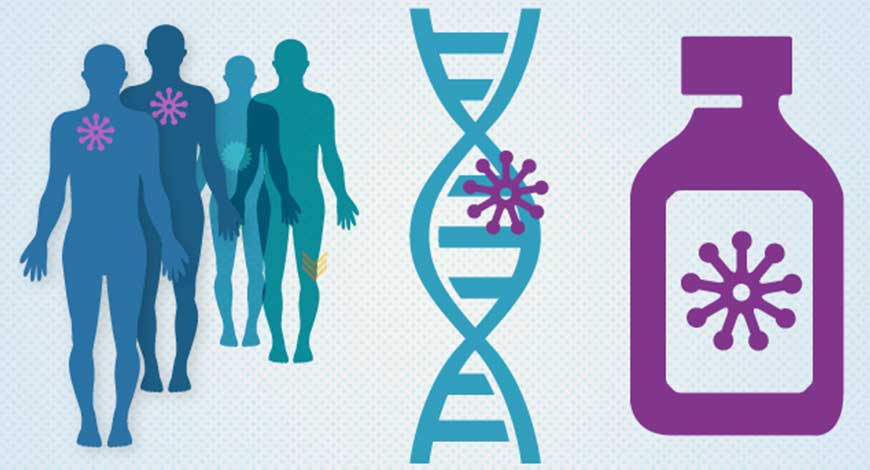Trends
Targeted radioactive drugs raise hopes for treating cancer

Peter Boerner ran out of cancer treatments in the spring of 2015. Up to that point, he had tried pretty much every option, including surgery when he was first diagnosed with stage 3 prostate cancer in August 1993 and radiation therapy that spring.
Boerner responded well to most of the medications—at first. But the cancer kept coming back, popping up in new places in a malignant game of whack-a-mole. “He’d take different medications,” says his wife, Nancy Boerner, “and these would be effective for a bit. Then we’d try another. The effective period would be shorter and shorter, until they just stopped working.”
The cancer spread to Boerner’s bones, including his skull. A tumor pressed into his brain, causing him pain and trouble seeing. As a last resort, he tried external-beam radiation, concentrating on his head. But the treatment ended up being debilitating. He could barely move for days afterward, Nancy Boerner says. So they gave up.
In early 2015, Boerner got a new granddaughter, whom he met only a handful of times. Boerner was too weak for many visits or even to hold the baby on his own. “I love you,” he’d whisper to her, over and over again. “I love you.”
Boerner died in June of that year at age 89. He was my father-in-law, and that baby is my daughter, now 7 years old. She doesn’t remember him.
The story of my father-in-law’s death is personal, but it’s not unique. Almost 10 million people worldwide die of cancer every year, so millions of families have a story like mine.
Cancer is the second biggest killer in the world, responsible for 1 out of every 6 deaths in 2020, according to the World Health Organization. There is no cure for the disease, and there may never be one. Now a new type of treatment is grabbing attention and raising hopes in the oncology community. Called radioconjugates, these drugs combine a radioactive isotope with a targeting agent that seeks cancer cells.
“The treatment is amazing for many patients,” says Steffen Schuster, CEO of ITM Isotope Technologies Munich, a biotech company that has been working on radioconjugate drugs for various types of cancer since 2009. It’s just one of many companies, big and small, getting into the development of radioconjugates.
Peter Scott, an expert on nuclear medicine and a medicinal and organic chemist at the University of Michigan, explains the buzz with an image from a 2019 paper showing a radioconjugate pilot treatment in a person with advanced metastasized prostate cancer. This now well-known image shows a series of positron-emission tomography/computed tomography (PET/CT) whole-body scans of the person—one before treatment and the others after each of three cycles of treatment (Eur J. Nucl. Med. Mol. Imaging 2019, DOI: 10.1007/s00259-018-4167-0). “This patient has metastatic prostate cancer to the bone, more or less everywhere,” Scott says. By the end, the radioconjugate has basically cleared up the cancer.
In the past 5 years, biotech start-ups researching radioconjugates have been springing up like mushrooms. Big companies, including AstraZeneca, Bayer, and Novartis, are also getting into the game, on their own and in partnerships with some of these smaller companies, such as ITM and Fusion Pharmaceuticals.
“Historically, pharma’s been gun shy when it comes to radiotherapeutics,” Scott says. But then along came Bayer. In 2013, the US Food and Drug Administration approved the company’s drug Xofigo, which is not a radioconjugate but a straight radium-223 dichloride therapy for prostate cancer. Bayer showed the Big Pharma world that internally administered radioactive cancer treatments could be successful, Scott says.
This success may have spurred Novartis to buy Advanced Accelerator Applications for $3.9 billion in 2018 and go on to acquire Endocyte for $2.1 billion. That deal included a lutetium-177-based prostate cancer drug, then in Phase 3 clinical trials.
Since then, the FDA has approved two radioconjugate drugs. In 2018, Novartis gained approval for the neuroendocrine cancer drug Lutathera, a radioactive 177Lu compound developed by Advanced Accelerator Applications.
And in late March 2022, the FDA cleared the 177Lu drug Novartis gained from Endocyte, Pluvicto. This therapy treats the type of cancer my father-in-law had, metastatic castration-resistant prostate cancer. “Novartis made a bet,” says Andrew Cavey, the global program head for prostate cancer at Advanced Accelerator Applications. There was some anecdotal evidence that radioconjugates worked against prostate cancer, and the data have borne out their effectiveness, he says.
Developing radioconjugates presents many obstacles. The drugs need to be carefully programmed to target the tumor, the type of radioisotope must be chosen carefully, and issues with supplying the radioactive components need to be ironed out. Even so, scientists are confident that the future of cancer treatment lies at least in part in radioconjugates. “I can see a future where we start to develop more radioisotopes for cancers that still currently can’t be treated,” Scott says. C&EN














